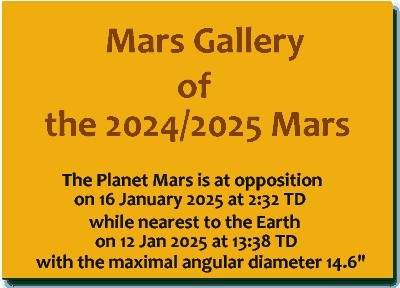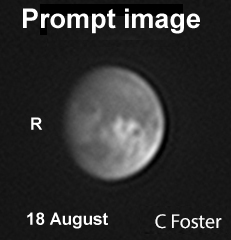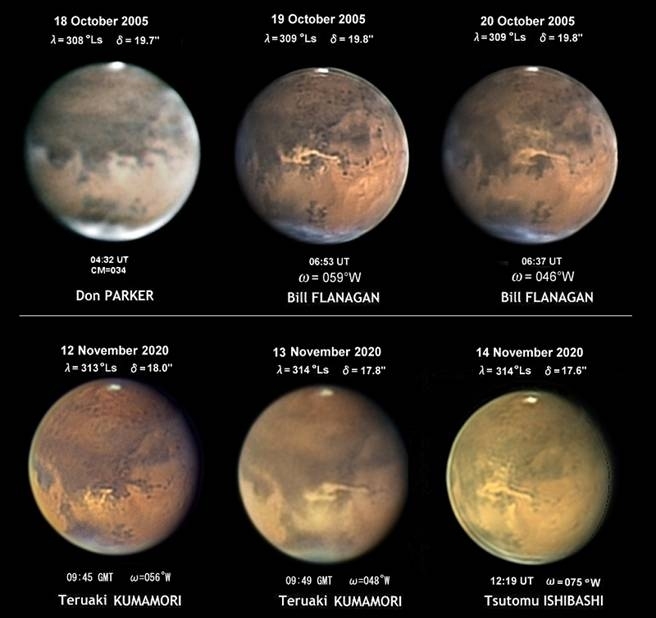A. Started a Gallery Page
The closest approach in mid-January next year will be a small approach with a maximal apparent diameter of 14.6 arc seconds. The period when the apparent diameter is 10 arc seconds or more is only for 4 months from mid-November to early March next year. However, during this period, you will observe the northern hemisphere of Mars just after the vernal equinox (λ=000°Ls).
We appreciate your sending images, sketches, etc. in jpg or png format to the address below, along with comments.
 We have started a gallery page for the 2024/25 Mars apparition. Mars is still in the constellation Capricorn, with an apparent diameter (δ) of just over 4 arc seconds, and a low declination, but images are now being sent from the country of southern hemisphere and the Philippines, where conditions are favorable.
We have started a gallery page for the 2024/25 Mars apparition. Mars is still in the constellation Capricorn, with an apparent diameter (δ) of just over 4 arc seconds, and a low declination, but images are now being sent from the country of southern hemisphere and the Philippines, where conditions are favorable.
The central latitude of the Mars also points slightly northward and you will observe the spring season of northern hemisphere. This is the season when you can observe the shrinking state of the north polar cap.
 B.
Breakout of dust storm
B.
Breakout of dust storm
A bright dust spreading from Chryse to Eos was detected by Clyde Foster's observation on the 18th (λ=314°Ls).
This dust event occurred at the same time period (Ls) as the one observed in 2020, and its location and initial shape are very similar.
I think from now on the brightness will spread southward from Eos and spread along Valles Marineris toward Solis Lacus.
The observable time shifts from the European side to the American continent side. Your continued observations would be appreciated.
 There was an outbreak a little earlier time period (Ls) in 2005. It is similar to this one as well. As with the previous observations shown on the right image,
There was an outbreak a little earlier time period (Ls) in 2005. It is similar to this one as well. As with the previous observations shown on the right image,